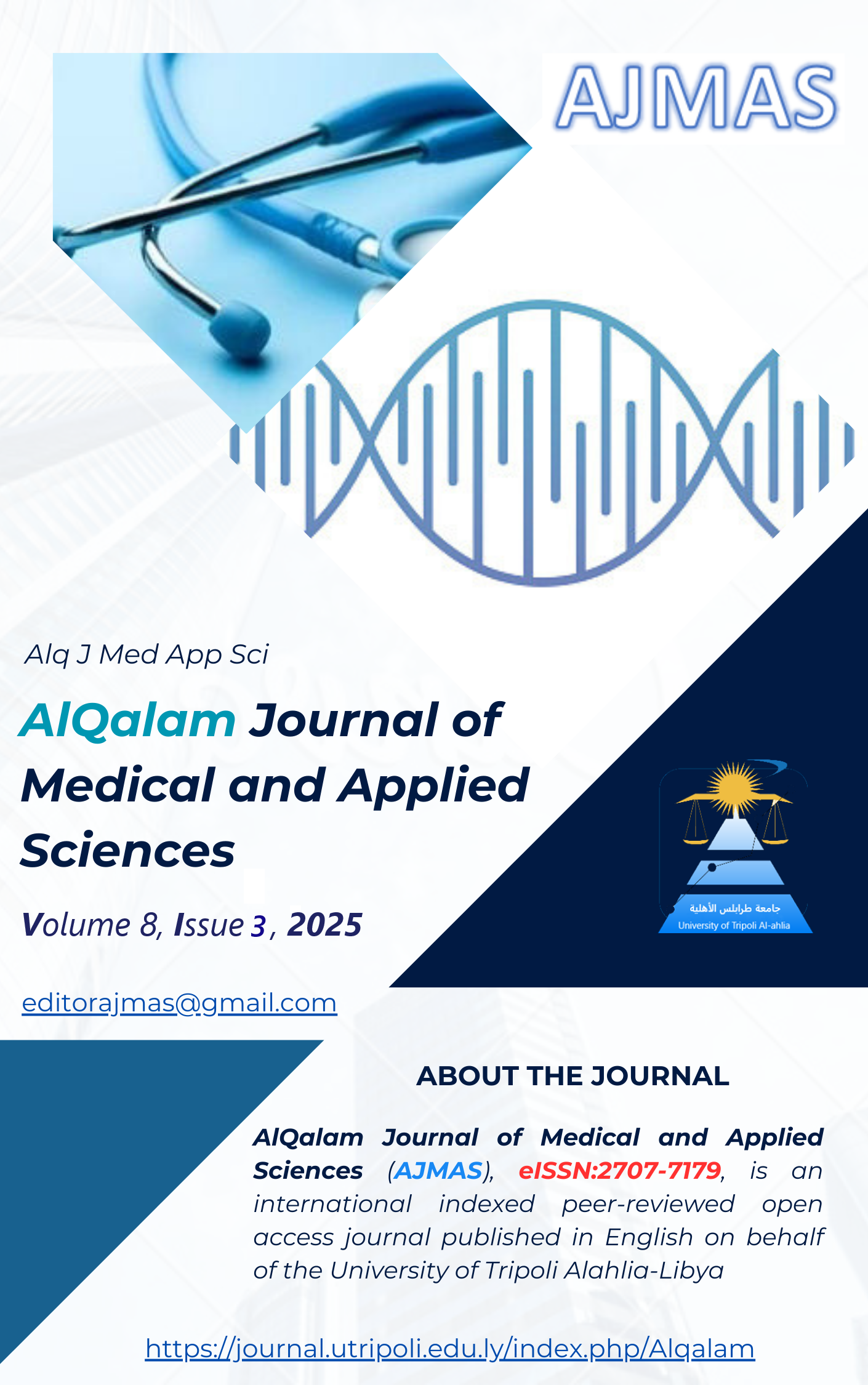Using the extracts of the (Dodder) plant and the concentrations of some metals as inhibitors for growth, the (Pseudomonas) bacteria isolated from some hospital rooms in Derna and Al-Bayda
DOI:
https://doi.org/10.54361/ajmas.258349Keywords:
Bacterial Isolation, Dodder Extracts, Antimicrobial, Hospital-Acquired Infections.Abstract
This study aimed to isolate and identify 112 samples from different departments in Derna and Al Bayda hospitals to determine the most common bacteria. Standard microbiological methods were used to identify the isolated bacteria from the study areas, such as spectrophotometry, minimum inhibitory concentration (MIC), and agar diffusion. Alcoholic and aqueous extracts of the wormwood plant were also used, in addition to the concentrations of some elements (copper, nickel, and iron) as inhibitors of the bacteria. Statistical analysis was performed using Tukey's analysis software, MlNlTAB version 2021. Some chemical analyses included phytochemical examination, antioxidant content, phenolic compounds, and metals. Some of the elements showed that the most common was Pseudomonas aeruginosa, accounting for 22.2% of the total. The effects of the wormwood plant extracts were studied, and their effectiveness was compared with the concentrations of the elements used in the study. The results showed that Dodder plant extracts had no effect on Gram-positive bacteria, and that the most effective and influential elements were nickel at a concentration of 100%, followed by copper, and the least effective was iron.
Downloads
Published
How to Cite
Issue
Section
License
Copyright (c) 2025 Hawaa Abdull-Jalliel, Najat Ben Aros, Muftah Alhoreir, Hamad Hasan

This work is licensed under a Creative Commons Attribution 4.0 International License.















